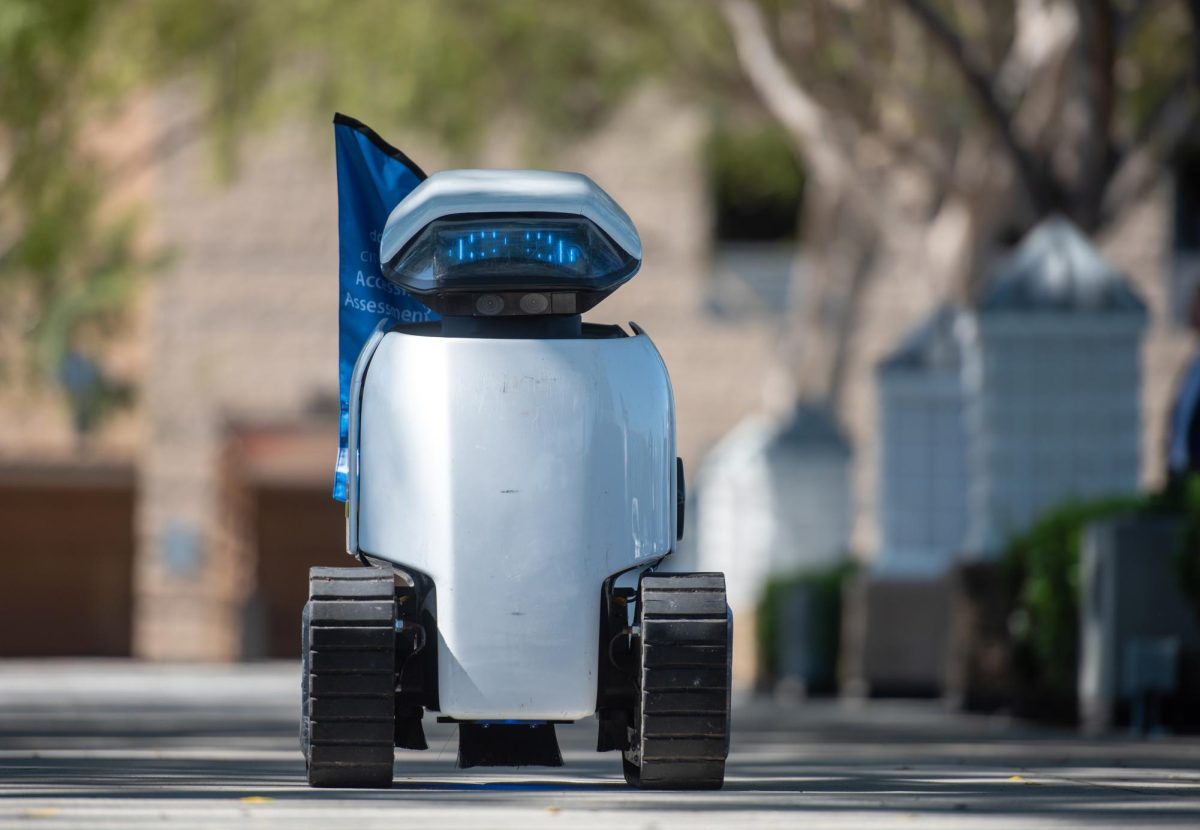Irvine began deploying Daxbot service robots in the last week of August to collect data on the accessibility of streets, sidewalks and curb ramps, according to the City of Irvine.
The robots are part of Irvine’s latest Self-Evaluation and Transition Plan, a periodic assessment of whether the city’s 9,000 curb ramps, 950 miles of sidewalks, 400 transit stops and 70 miles of paved trails comply with regulations listed in Title II of The Americans with Disabilities Act (ADA), according to City of Irvine Principal Civil Engineer Vu Tran. It requires public agencies to identify barriers that prevent equal access and develop a strategy to remove them.
The city hired Bureau Veritas — a management company specialized in testing, inspection and certification — to lead the project after reviewing six proposals in late 2024. Oregon-based Daxbot, which supplies the robots, operates as a subconsultant to Bureau Veritas for the project, according to Tran.
Portola High dance director Samantha Gardner first heard about the robots through social media and later encountered them on an Irvine sidewalk.
“I think [Irvine] taking a proactive approach is great,” Gardner said. “There’s a ton of work on our campus, whether that’s maintenance or evaluating accessibility or traffic, that could be turned over to robotics eventually.”
The Daxbots are equipped with lasers, inclinometers and photogrammetry, which allows three-dimensional structures to be estimated from photographs, according to Daxbot Robot Operations Manager Mason Reeves in an interview with NBC News.
“The measurements we’re gathering are designed based on standards that were put together by a whole board that looked into an array of accessibility challenges and safety issues,” Daxbot Marketing Director Miriam Sullivan said. “It’s an objective criteria.”
The robots simulate potential challenges that wheelchair users may encounter. Cities often have a hard time collecting data on a large scale due to insufficient manpower, necessitating the introduction of technology such as robots, according to Sullivan.
“I think one of the advantages is that it can work longer hours and more efficiently, just going nonstop without needing breaks,” Gardner said. “A drawback I noticed is that when we came across them at an intersection, my kids were interacting with the robots on the sidewalk, and a lot of drivers were watching. I could see how that might become a distraction for traffic if people are focused on the robots while they’re on the streets or sidewalks.”
Data collected by the robots will be analyzed by Bureau Veritas in six months to determine any necessary adjustments to curb ramps and sidewalks. Changes will be incorporated into the city’s next round of capital improvement projects that are budgeted and scheduled annually.




